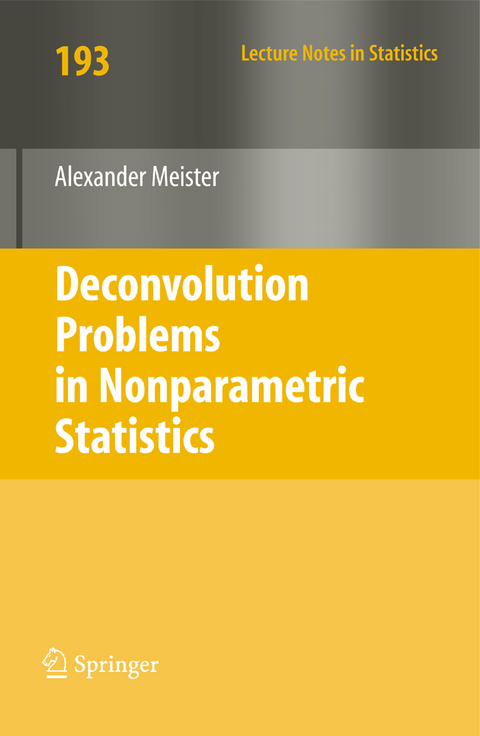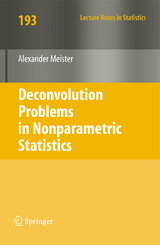Deconvolution Problems in Nonparametric Statistics
Deconvolution problems occur in many ?elds of nonparametric statistics, for example, density estimation based on contaminated data, nonparametric - gression with errors-in-variables, image and signal deblurring. During the last two decades, those topics have received more and more attention. As appli- tions of deconvolution procedures concern many real-life problems in eco- metrics, biometrics, medical statistics, image reconstruction, one can realize an increasing number of applied statisticians who are interested in nonpa- metric deconvolution methods; on the other hand, some deep results from Fourier analysis, functional analysis, and probability theory are required to understand the construction of deconvolution techniques and their properties so that deconvolution is also particularly challenging for mathematicians. Thegeneraldeconvolutionprobleminstatisticscanbedescribedasfollows: Our goal is estimating a function f while any empirical access is restricted to some quantity h = f?G = f(x?y)dG(y), (1. 1) that is, the convolution of f and some probability distribution G. Therefore, f can be estimated from some observations only indirectly. The strategy is estimating h ?rst; this means producing an empirical version h of h and, then, applying a deconvolution procedure to h to estimate f. In the mathematical context, we have to invert the convolution operator with G where some reg- ularization is required to guarantee that h is contained in the invertibility domain of the convolution operator. The estimator h has to be chosen with respect to the speci?c statistical experiment.
Density Deconvolution.- Nonparametric Regression with Errors-in-Variables.- Image and Signal Reconstruction.
From the reviews:
"This book gives an introduction to deconvolution problems in nonparametric statistics. ... The author intends to provide a comprehensive overview on results derived during the last twenty years and to give a discussion on modern and recently solved problems. ... The main target group of readers are scientists and graduate students working in mathematical statistics. ... the book is also interesting for people working in econometrics, biometrics, and other fields of applied statistics." (Hannelore Liero, Zentralblatt MATH, Vol. 1178, 2010)
"Research workers in mathematical statistics. ... The target readership is described as 'scientists and graduate students working in the field of mathematical statistics' ... . Throughout, there are lots of proofs and derivations, particularly involving estimation consistency and convergence rates. ... This looks to me like an excellent book for the specialist - a thorough, detailed, rigorous treatment of a particular field." (Martin Crowder, International Statistical Review, Vol. 78 (1), 2010)
"Deconvolution problems occur in many topics of nonparametric statistics with ample applications in other scientific fields. This book focuses on methodology and theory rather than computational aspects and programming. ... In summary, this book is quite theoretical. It is written in a tutorial style and it makes a good self-teaching monograph for the methodology and theory development of deconvolution problems." (Su-Yun Chen Huang, Mathematical Reviews, Issue 2012 h)
| Erscheint lt. Verlag | 25.3.2009 |
|---|---|
| Reihe/Serie | Lecture Notes in Statistics |
| Zusatzinfo | VI, 210 p. |
| Verlagsort | Berlin |
| Sprache | englisch |
| Maße | 155 x 235 mm |
| Gewicht | 332 g |
| Themenwelt | Mathematik / Informatik ► Mathematik ► Statistik |
| Mathematik / Informatik ► Mathematik ► Wahrscheinlichkeit / Kombinatorik | |
| Schlagworte | Calculus • Contaminated data • Deconvolution • Density Estimation • fourier analysis • image reconstruction • parametric statistics • Statistics |
| ISBN-13 | 9783540875567 / 9783540875567 |
| Zustand | Neuware |
| Informationen gemäß Produktsicherheitsverordnung (GPSR) | |
| Haben Sie eine Frage zum Produkt? |
aus dem Bereich




